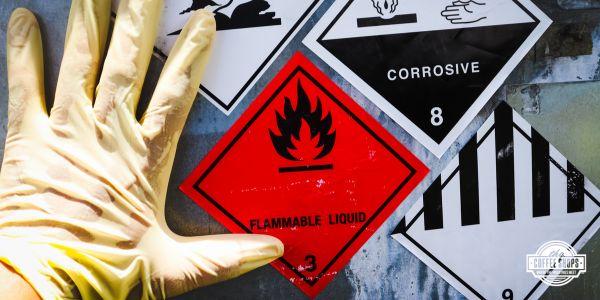UP TO THE MINUTE
Aligning with global standards

By Cotney Consulting Group.
What roofers need to know about OSHA’s updated HazCom rules.
On May 20, 2024, the Occupational Safety and Health Administration (OSHA) unveiled significant revisions to the Hazard Communication Standard (HCS), aligning it more closely with the United Nations' Globally Harmonized System of Classification and Labelling of Chemicals (GHS), specifically Revision 7. This update aims to enhance clarity and harmonize the HCS with other federal agencies and international partners. Understanding these changes is crucial for the roofing industry, as they introduce new regulatory requirements for chemical classification, labeling and safety data sheets (SDSs).
Key changes and their implications
Impact on manufacturers and importers
The updated HCS imposes several new requirements on chemical manufacturers and importers. These entities must reassess their chemical classifications to ensure compliance with OSHA's revised criteria. Although OSHA does not anticipate major changes in overall coverage or health hazard classifications of existing chemicals, some physical hazard classifications might shift, such as those for aerosols, chemicals under pressure and desensitized explosives.
Manufacturers and importers must update their chemical labels to reflect changes detailed in the new Appendix C, which includes significant updates to mandatory precautionary statements. Additionally, all SDSs for hazardous chemicals must be revised to meet the updated requirements.
Responsibilities of distributors
Distributors will continue to rely on the SDSs and labels provided by manufacturers. However, if a distributor relabels a product, replacing the manufacturer's or importer's name with their own, they must comply with all HCS requirements applicable to manufacturers and importers. OSHA has not set a separate compliance date for distributors, reflecting updates to the labeling options under (f)(11).
Requirements for downstream users and employers
Employers must update their workplace labels, hazard communication programs and training if new hazards or chemicals are introduced. The revised standard mandates that employers adapt to these changes to ensure continued safety and compliance.
Detailed overview of revisions
Updated definitions
OSHA has introduced several new definitions, including those for physical states of chemicals (gas, liquid or solid) and specific terms like "immediate outer package" and "bulk shipment." The definition of "combustible dust" has also been added, though in a generic form.
Classification of chemicals
The classification requirements under paragraph (d) have been updated to emphasize the intrinsic properties of chemicals rather than their conditions of use. This revision aims to clarify the scope and ensure consistent hazard communication.
Labeling changes
- Several key updates have been made to the labeling requirements:
- Hazards identified under (d)(1)(ii) need only be disclosed on the SDS.
- The responsible party's address and telephone number must be a U.S. address and telephone number.
- Transportation-related labeling requirements have been relocated to (f)(5) and relief is provided for labeling containers already released for shipment.
- New provisions for small container labeling are included in (f)(12), detailing requirements for containers with capacities of 100 ml or less.
Safety data sheets (SDSs)
While changes to the SDS format are minor, Appendix D has been updated to align with GHS Revision 7 and clarify previous implementation concerns. Key updates include requirements for U.S. contact information, unique identifiers for ingredients and detailed guidance on presenting physical and chemical properties.
Compliance deadlines
OSHA has established a phased set of deadlines for compliance:
- January 19, 2026: Update labels and SDSs for substances.
- July 20, 2026: Update workplace labels, hazard communication programs and training for substances.
- July 19, 2027: Update labels and SDSs for mixtures.
- January 19, 2028: Update workplace labels, hazard communication programs and training for mixtures.
- May 20, 2024: Entities may comply with either the final standard or the previous version during the transition period.
Strategies for compliance
Given the breadth and complexity of the new requirements, immediate action is recommended. Here are three key strategies for ensuring compliance:
- Form a compliance team: Designate a knowledgeable team to oversee the reassessment and updating of your hazard communication program. This team should be well-versed in the chemicals used in your operations and coordinate with legal counsel experienced in OSHA regulations.
- Reevaluate chemical classifications and programs: Conduct a thorough analysis of your chemical classifications, labels, SDSs and hazard communication program. Starting early will ensure you meet compliance deadlines without last-minute rushes.
- Consult legal experts: Navigate the new legal questions and compliance challenges with the help of experienced OSHA counsel. Issues such as classification based on downstream uses and international regulatory differences can be complex and require expert guidance.
OSHA's updated Hazard Communication Standard represents a significant shift towards greater alignment with international safety standards. For the roofing industry, staying ahead of these changes is essential to ensure the safety of your workforce and maintain regulatory compliance. By understanding the new requirements and implementing strategic compliance measures, you can effectively navigate this regulatory landscape and safeguard your business operations.
Learn more about Cotney Consulting Group in their Coffee Shop Directory or visit www.cotneyconsulting.com.





















Comments
Leave a Reply
Have an account? Login to leave a comment!
Sign In